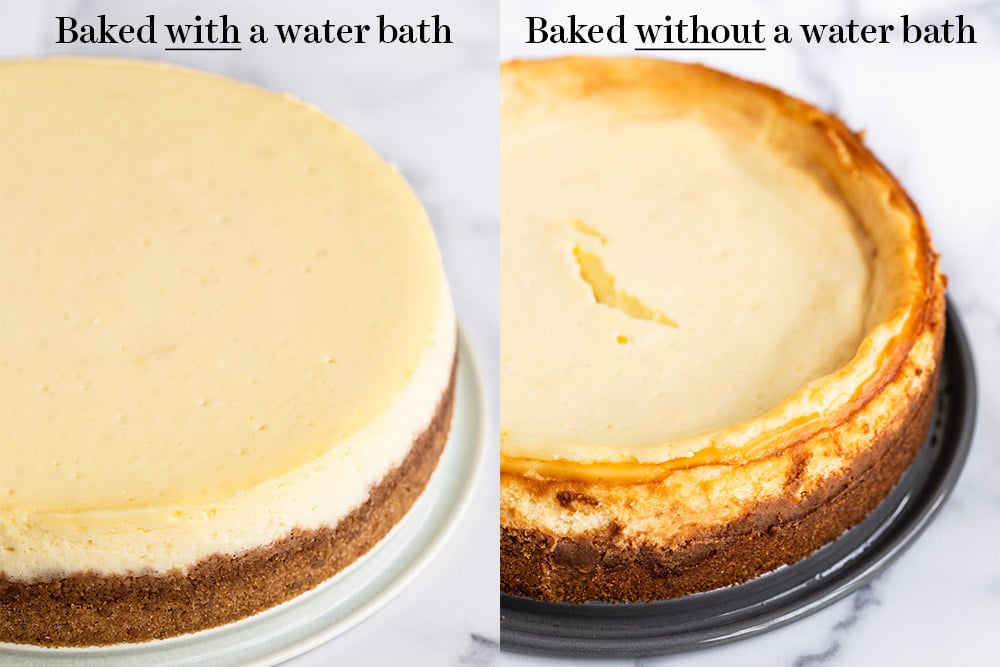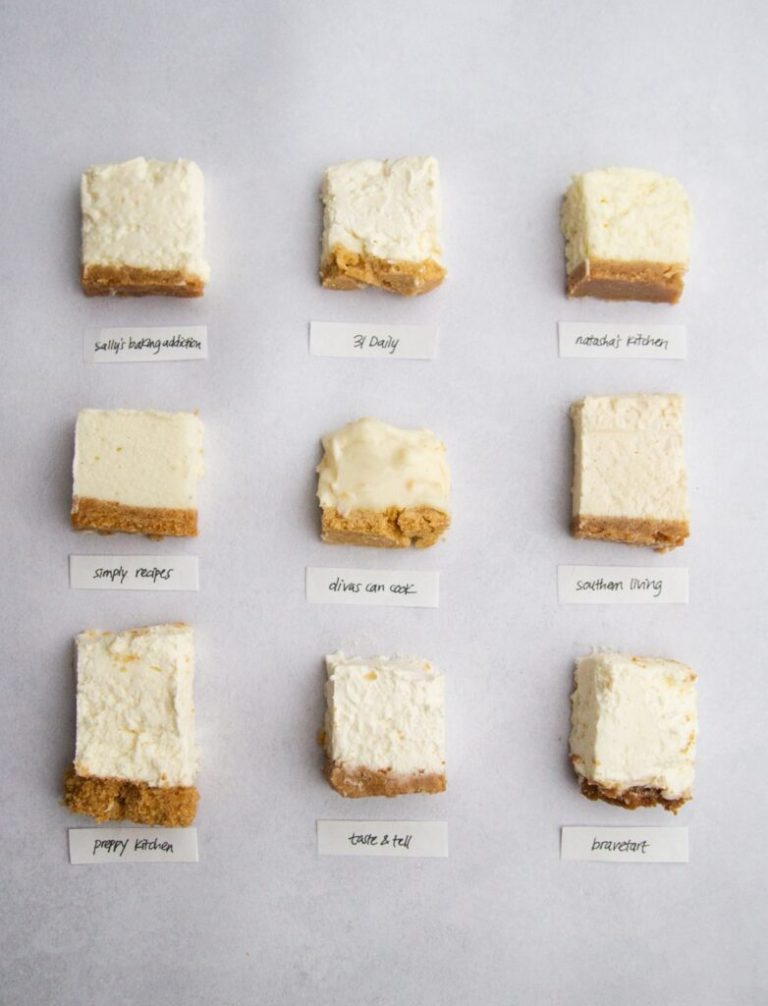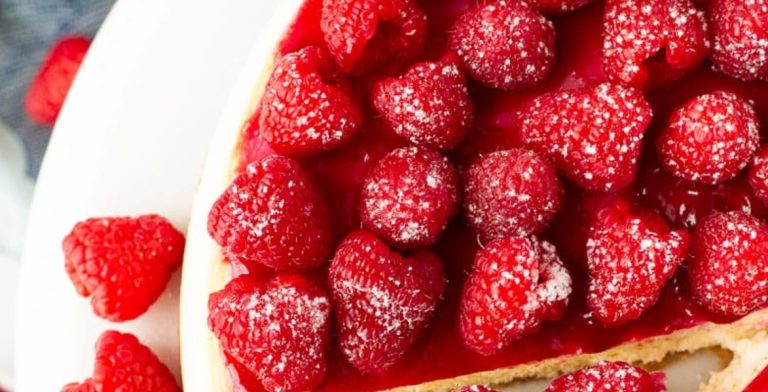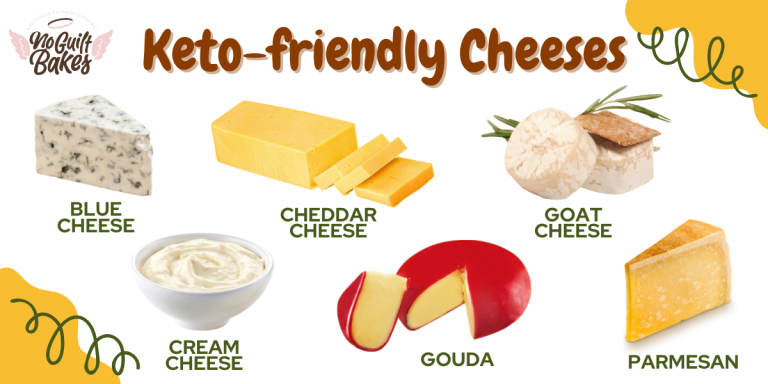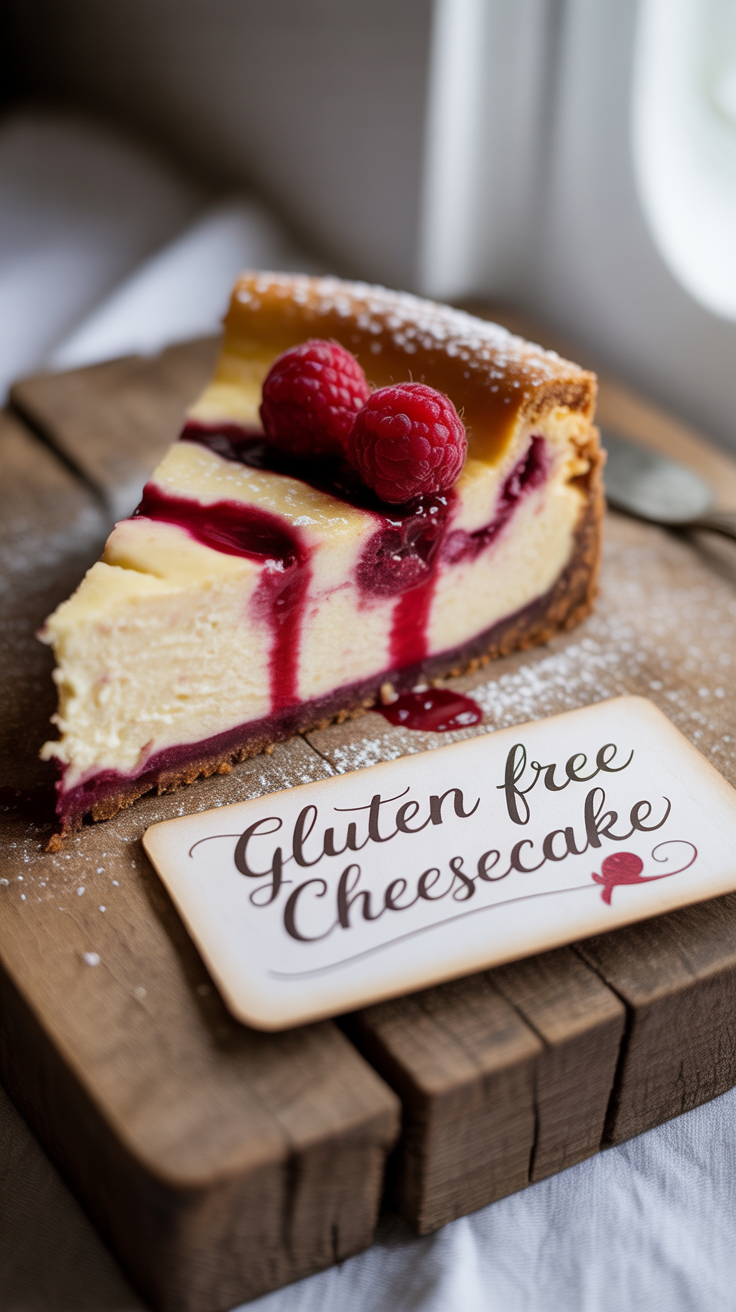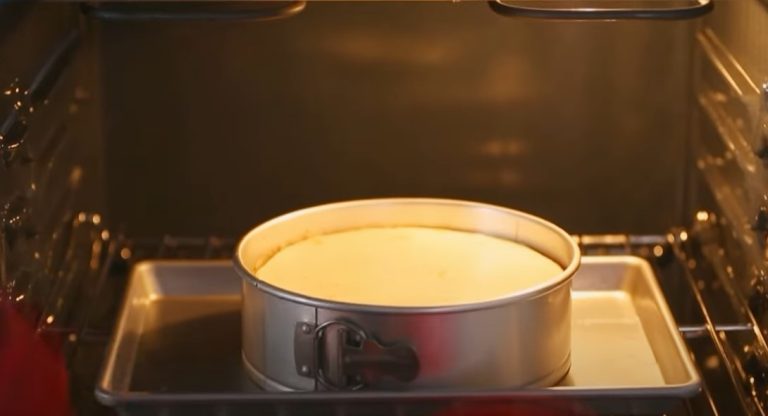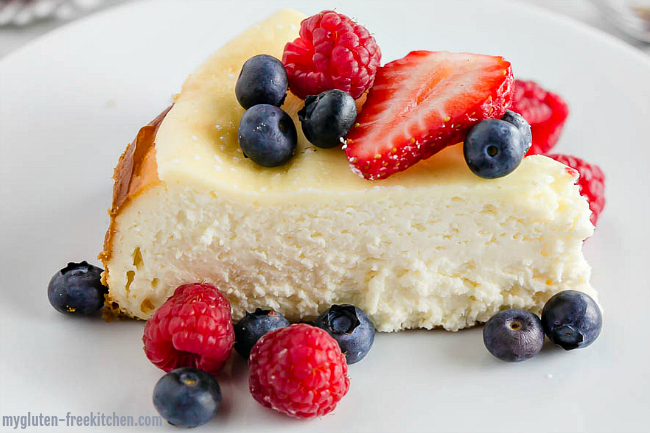How Long to Bake a Cheesecake at 325? Perfect Timing Guide
How long to bake a cheesecake at 325? Bake a cheesecake at 325°F (163°C) for 50 to 70 minutes, depending on the recipe and pan size. The edges should be set, and the center slightly jiggly. Avoid overbaking to prevent cracks. Let it cool gradually for best texture.
But achieving this culinary delight isn’t just about mixing ingredients; it’s about mastering the bake time and temperature. If you’ve been wondering how long to bake a cheesecake at 325 degrees, you’re not alone. Many home bakers struggle with getting this dessert just right.
In this post, we’ll unravel the secrets behind the perfect cheesecake bake time. You’ll discover tips that ensure your cheesecake is not too soft and not too firm, but just right. Get ready to impress your taste buds and your guests with a cheesecake that’s baked to perfection. Dive in, and let’s transform your baking game!

Credit: hungryhappenings.com
How Long to Bake a Cheesecake at 325?
Cheesecake Baking Basics
Baking a cheesecake to perfection is an art, but understanding the basics can make the process much easier. Knowing how long to bake your cheesecake at 325°F is crucial for achieving that creamy, dreamy texture. Let’s break down the essentials so you can bake your cheesecake with confidence.
The Importance Of Room Temperature Ingredients
Starting with room temperature ingredients is a game-changer. Cold ingredients don’t blend as smoothly, leading to lumps in your batter. Ensure your cream cheese, eggs, and other refrigerated items sit out for at least an hour before mixing.
Why 325°f Is The Ideal Temperature
Baking at 325°F allows the cheesecake to cook slowly and evenly. Higher temperatures can cause the surface to crack or the edges to overcook. By keeping the oven at 325°F, you ensure a silky interior and a golden crust.
Using A Water Bath For Even Baking
A water bath, or bain-marie, is a simple trick to prevent cracks. Place your cheesecake in a larger pan filled with an inch of hot water. This creates steam, which helps the cheesecake bake gently and evenly.
Checking For Doneness: The Jiggle Test
Wondering how to know when your cheesecake is done? Give it the jiggle test. Gently shake the pan; the center should wobble slightly while the edges are set. This indicates it’s ready to cool and set properly.
Patience Is Key: Cooling And Setting
After baking, resist the urge to cut into your cheesecake immediately. Allow it to cool at room temperature, then refrigerate for at least four hours. This patience pays off with a perfectly set and flavorful dessert.
Have you ever baked a cheesecake that didn’t turn out quite right? Reflecting on past baking attempts can highlight these basics. Understanding these elements ensures your next cheesecake is a success. So why not give it a try and see the difference?
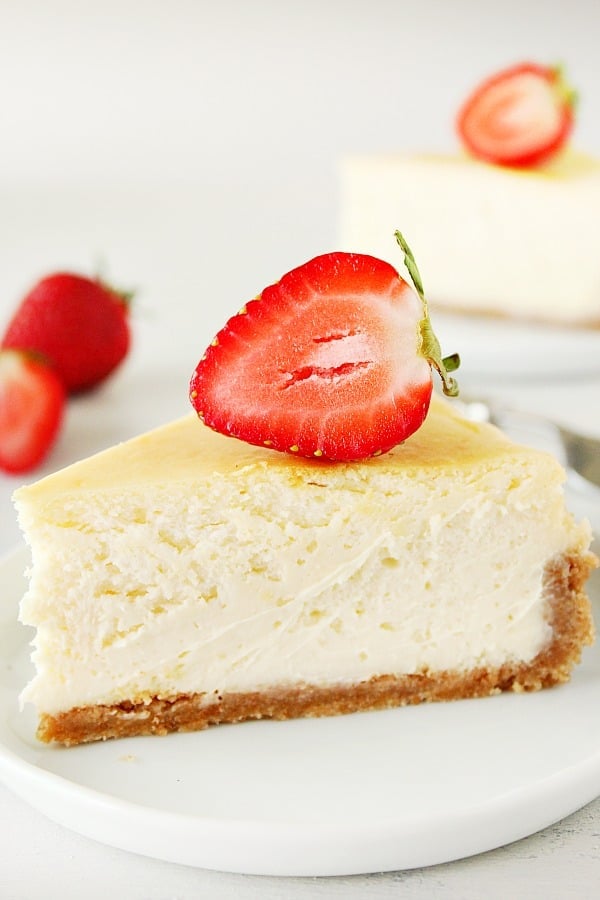
Credit: www.crunchycreamysweet.com
Choosing The Right Ingredients
When baking a cheesecake, every detail matters, especially the ingredients you choose. Imagine this: you’ve followed the recipe to the letter, but somehow the taste is not quite right. This is often because the ingredients weren’t chosen with care. Selecting the right ingredients can make or break your cheesecake. Your choice can transform a simple dessert into an unforgettable experience. Let’s dive into what makes the perfect cheesecake ingredients.
Quality Cream Cheese Makes All The Difference
The foundation of any cheesecake is cream cheese. Opt for full-fat cream cheese for a rich and creamy texture. Low-fat alternatives might seem tempting, but they often lead to a less satisfying outcome. Always check the expiration date for freshness. A fresher cream cheese will blend smoothly and create a delightful consistency.
Fresh Eggs For A Perfect Texture
Eggs are the binding agent in your cheesecake. Use room temperature eggs to ensure they mix evenly with the other ingredients. This prevents lumps and gives your cheesecake a smoother finish. Fresh eggs contribute to a light, airy texture that everyone loves.
Sugar: Granulated Vs. Powdered
Granulated sugar is the usual choice, but have you ever tried powdered sugar? It dissolves quicker and blends seamlessly, enhancing the cheesecake’s texture. The key is not to overdo it; the right balance of sweetness can elevate flavors without overwhelming them.
The Secret Ingredient: Vanilla Extract
Vanilla extract isn’t just a flavor enhancer; it’s a game-changer. It adds depth and complexity to your cheesecake, making each bite memorable. Use pure vanilla extract for the best results, avoiding artificial variants that can taste synthetic.
Choosing the right ingredients isn’t just about following the recipe. It’s about understanding how each component affects your cheesecake. Have you tried experimenting with different brands or types of ingredients to see how they impact the taste? Next time, consider making small adjustments and note how they change the outcome. You might discover a new favorite twist on a classic dessert.
Preparing Your Cheesecake
Baking a cheesecake at 325°F typically takes 50 to 60 minutes. Check for a slight jiggle in the center to ensure it’s done. Let it cool before serving for the best texture.
Preparing a cheesecake might seem daunting, but with a little preparation, you’ll find the process straightforward and rewarding. There’s something incredibly satisfying about making your cheesecake from scratch. The anticipation of that first creamy bite makes the effort worthwhile. As you gear up to bake your cheesecake at 325°F, you’ll need to pay attention to a few details to ensure success.
Gather Your Ingredients
Start by collecting all the necessary ingredients. You’ll typically need cream cheese, sugar, eggs, vanilla extract, and a crust base like graham crackers or digestive biscuits. Having everything ready before you start can save time and reduce stress.
Prepare The Crust
Crush your crackers or biscuits until they resemble fine crumbs. Mix them with melted butter and a bit of sugar for added sweetness. Press the mixture firmly into the bottom of your baking pan, creating an even layer.
Mix The Filling
Ensure your cream cheese is at room temperature for a smooth mixture. Beat it with sugar until creamy, then add eggs one at a time, mixing well after each. Stir in vanilla extract for a touch of flavor.
Check For Lump-free Batter
Nobody likes a lumpy cheesecake. Use a spatula to scrape the sides of your mixing bowl frequently. This ensures all ingredients blend smoothly, resulting in a silky batter.
Line The Pan
Protect your cheesecake from water bath leaks by lining the outside of your springform pan with aluminum foil. This step is crucial if you plan to use a water bath, which helps prevent cracks by maintaining even baking.
Consider A Water Bath
While optional, a water bath can elevate your cheesecake’s texture. Place your foil-wrapped pan in a larger baking dish and fill it with hot water halfway up the sides. This technique provides a gentle, even heat.
Set The Oven Temperature
Preheat your oven to 325°F. This moderate temperature ensures your cheesecake bakes evenly without browning too quickly. It’s a sweet spot for achieving that perfect creamy consistency.
Plan For Baking Time
Expect your cheesecake to bake for about 55 to 70 minutes at 325°F. The edges should look set, yet the center will jiggle slightly. This is the hallmark of a perfectly baked cheesecake.
Patience Is Key
Once your cheesecake is baked, let it cool gradually. Rushing this step can lead to cracks or a mushy texture. Give it time to set and firm up, ideally in the refrigerator overnight.
Reflect On Your Experience
How did your cheesecake turn out? Share your experience with friends or family, and maybe jot down any tweaks for next time. There’s always room for a little experimentation in baking.
Baking Time And Temperature
Baking a cheesecake at 325 degrees Fahrenheit requires precision. The temperature influences texture and flavor. It ensures the cheesecake sets without cracking. Knowing the right baking time is essential.
Understanding Baking Time
Baking time varies. Cheesecake recipes differ. Usually, a cheesecake bakes for 45 to 60 minutes. Check the center to see if it’s set. A slight jiggle means it’s ready.
Importance Of Temperature
325 degrees is ideal for cheesecake. It cooks slowly, preventing cracks. This temperature helps achieve a creamy texture. The cheesecake must cool gradually.
Monitoring Progress
Keep an eye on your cheesecake. It should not brown too much. Use a toothpick to check the center. The edges should be firm.
Final Steps
Once baked, let it cool. Refrigerate for several hours. This enhances flavor and texture. Serve when fully chilled.
Testing For Doneness
Testing your cheesecake for doneness ensures a perfect result. Baking at 325 degrees requires attention. You don’t want an undercooked or overcooked cheesecake. Several methods help determine if your cheesecake is ready.
Jiggle Test
Gently shake the cheesecake pan. The center should slightly jiggle, like Jell-O. The edges should be set and firm. This indicates it’s time to stop baking.
Toothpick Test
Insert a toothpick near the center. It should come out mostly clean. A few moist crumbs are okay. Avoid inserting too close to the edge.
Internal Temperature
Use a kitchen thermometer for accuracy. The ideal temperature is around 150 degrees Fahrenheit. Insert the thermometer into the center. Avoid touching the pan.
Cooling And Setting
Let the cheesecake cool in the oven. Crack the oven door slightly. This helps prevent cracks. Once cool, refrigerate for several hours.
Visual Clues
Observe the cheesecake surface. It should be slightly golden. Look for a smooth surface without cracks. A small browning at the edges is fine.
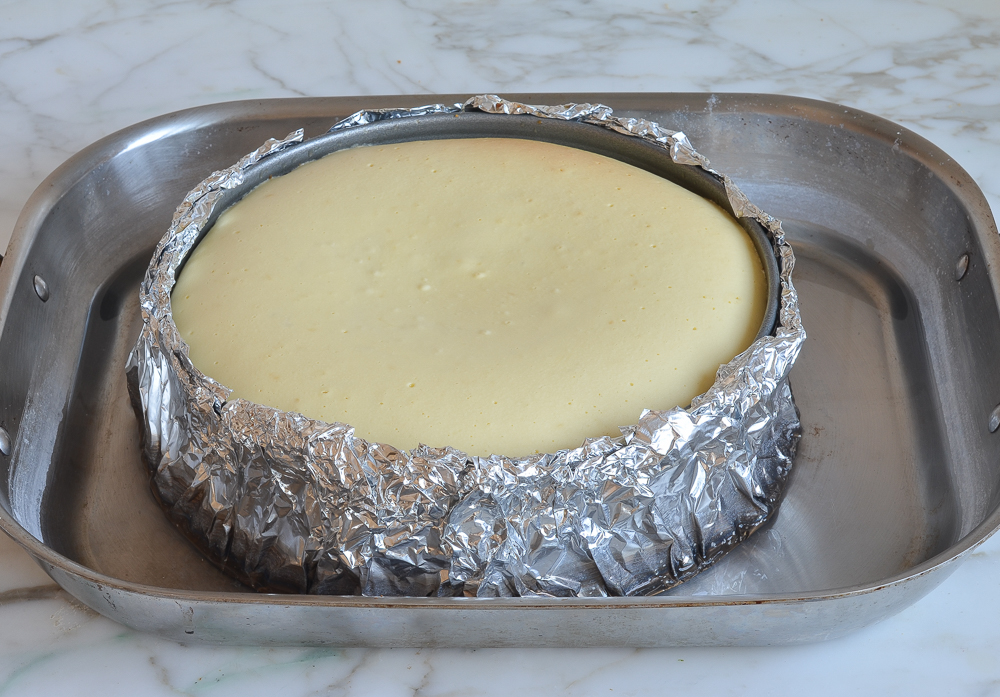
Credit: www.onceuponachef.com
Frequently Asked Questions
How Long Should A Cheesecake Bake At 325°f?
A cheesecake typically bakes for 60-70 minutes at 325°F. Check for a slight jiggle in the center.
What Signs Show A Cheesecake Is Fully Baked?
The center should slightly jiggle while the edges are set. Avoid overcooking for a creamy texture.
Can I Adjust Baking Time For A Smaller Cheesecake?
Yes, reduce baking time for smaller cheesecakes. Check earlier to prevent overbaking. Adjust as needed.
Conclusion
Baking a cheesecake at 325 degrees needs patience and precision. Usually, it takes around 75 minutes. But, always check for a slight jiggle in the center. This ensures a perfect texture. Avoid opening the oven door too often. It can cause cracks.
Let it cool slowly in the oven. Then, refrigerate for the best taste. Remember, practice makes perfect. Each cheesecake is a learning experience. Enjoy the process and the delicious results. Happy baking!
Related Recipes

